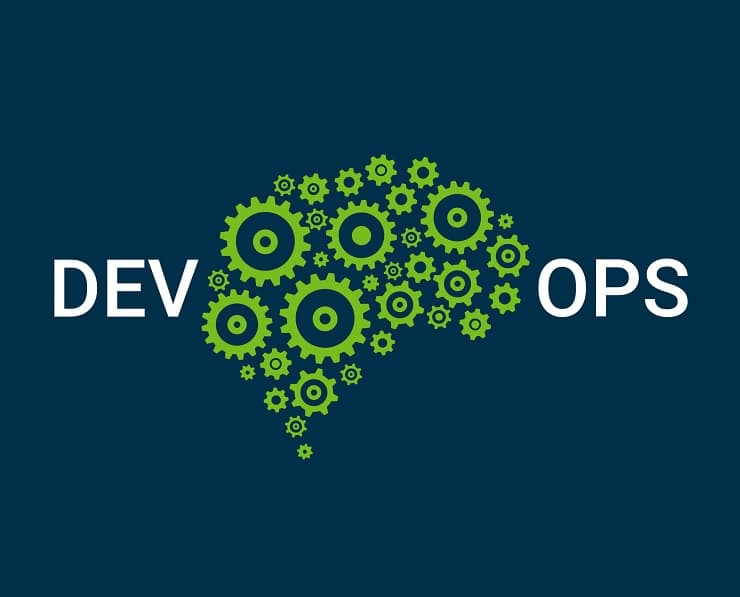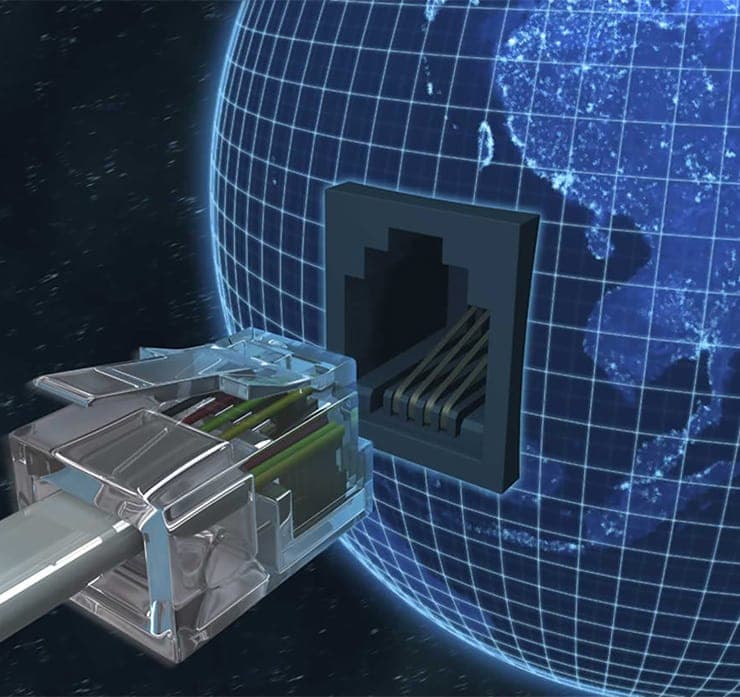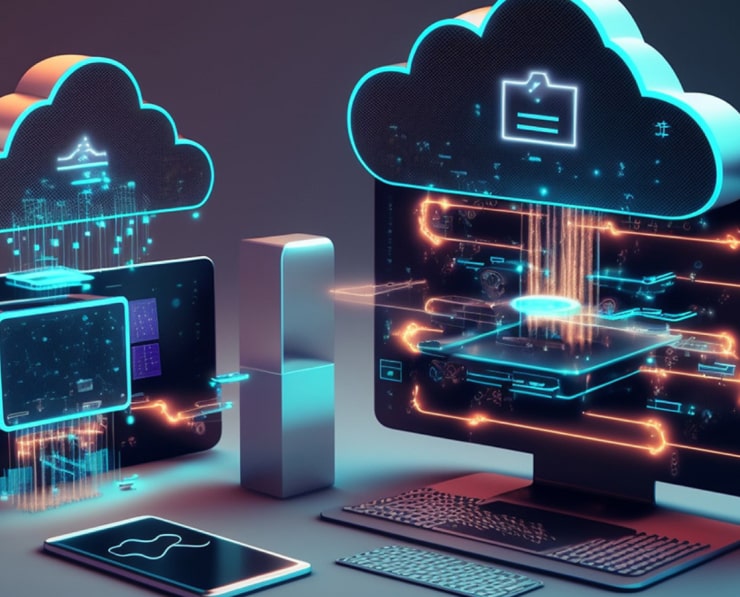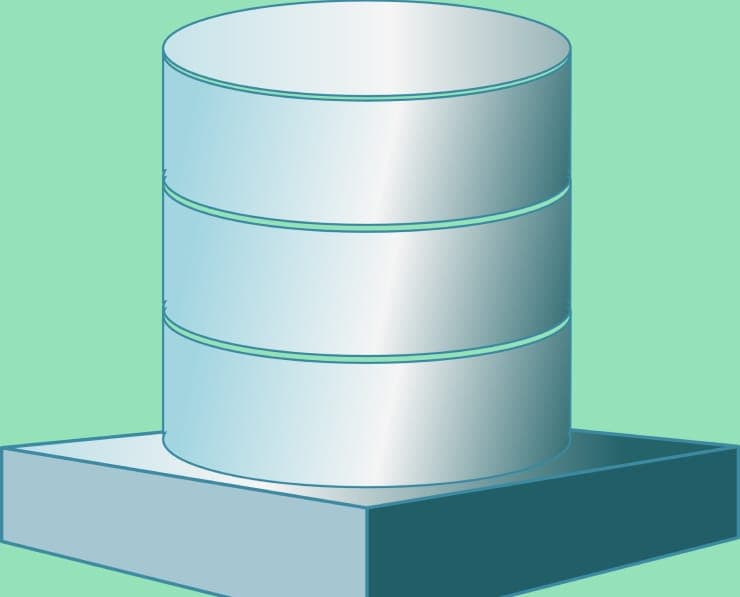Student Feedback
AWS Certified Machine Learning - Specialty: AWS Certified Machine Learning - Specialty (MLS-C01) Certification Video Training Course Outline
Introduction
Data Engineering
Exploratory Data Analysis
Modeling
ML Implementation and Operations
Wrapping Up
Introduction
AWS Certified Machine Learning - Specialty: AWS Certified Machine Learning - Specialty (MLS-C01) Certification Video Training Course Info
AWS Certified Machine Learning Specialty (MLS-C01) Exam Prep Course
AWS Machine Learning Certification Prep – Master SageMaker, Generative AI, Data Engineering, Modeling, and More
What You Will Learn From This Course
• Complete preparation for the AWS Certified Machine Learning Specialty (MLS-C01) exam with a strong focus on both AWS services and advanced machine learning techniques
• Mastery of Amazon SageMaker, including built-in algorithms such as XGBoost, BlazingText, and Object Detection for real-world ML model development
• Practical knowledge of feature engineering, including imputation, outlier detection, binning, transformations, encoding, and normalization to optimize model performance
• Hands-on experience with high-level AWS AI and ML services such as Comprehend, Translate, Polly, Transcribe, Lex, Rekognition, and more to build intelligent applications
• Deep understanding of data engineering workflows using S3, AWS Glue, Kinesis, and DynamoDB for scalable and secure data processing
• Exploratory data analysis using scikit-learn, Athena, Apache Spark, and EMR to extract actionable insights from large datasets
• Training and hyperparameter tuning of deep neural networks with techniques to avoid overfitting and improve model accuracy
• Automatic model tuning and operations with SageMaker Autopilot, Model Monitor, and Debugger to streamline deployment and maintenance
• Application of regularization techniques such as L1 and L2 to enhance predictive modeling
• Implementation of AWS security best practices for building compliant and secure machine learning pipelines
Learning Objectives
The primary goal of this course is to equip learners with the knowledge and practical skills needed to pass the AWS Certified Machine Learning Specialty exam and apply these competencies in real-world projects. By the end of the course, learners will have a strong command of Amazon SageMaker, AWS AI services, and key machine learning principles, enabling them to design, implement, and optimize scalable machine learning solutions on the AWS cloud. Students will be able to perform advanced data engineering using S3 data lakes, Glue ETL, and Kinesis streams, conduct exploratory data analysis with modern tools, and train deep learning models using state-of-the-art techniques. The course also aims to provide confidence in working with Generative AI services such as AWS Bedrock, SageMaker JumpStart, and CodeWhisperer, empowering learners to integrate large language models and transformer-based architectures into their applications. By completing this training, participants will be ready to build secure, efficient, and production-ready machine learning pipelines while applying best practices for data management, model evaluation, and operational excellence.
Target Audience
This course is designed for professionals who want to advance their careers in cloud-based machine learning and prepare for one of the most respected certifications in the industry. It is ideal for developers, data scientists, and machine learning engineers who already have experience with AWS and want to deepen their expertise in building and deploying machine learning solutions. Cloud architects, data engineers, and software engineers seeking to expand their skills in AI and ML will also benefit from this training. Individuals working in industries such as finance, healthcare, e-commerce, or technology who need to implement machine learning models at scale will find this course especially valuable. Whether you are pursuing certification to enhance your career opportunities or aiming to apply AWS machine learning services to enterprise projects, this course offers the comprehensive training required to achieve your goals.
Requirements
To make the most of this course, students should have a strong foundation in AWS fundamentals and an understanding of key cloud concepts. Associate-level knowledge of AWS services such as EC2, S3, and IAM is essential for navigating the AWS environment and performing the hands-on labs included in the course. Basic familiarity with machine learning principles, including supervised and unsupervised learning, model evaluation, and algorithm selection, is necessary to grasp the advanced topics covered in the training. An active AWS account is required to complete the practical exercises, which involve creating and managing AWS resources. Learners should also be comfortable using Python for data analysis and machine learning tasks, as many of the labs and demonstrations use Python-based tools such as scikit-learn and Apache Spark. A willingness to explore new technologies, experiment with data engineering workflows, and practice model tuning techniques will help participants succeed in this challenging but rewarding course.
Prerequisites
Before enrolling in this course, learners should have experience working with AWS services at an associate level. Completion of certifications such as AWS Certified Solutions Architect Associate or AWS Certified Developer Associate is highly recommended to ensure familiarity with the AWS ecosystem. A basic understanding of programming in Python and common machine learning frameworks will provide a strong foundation for the hands-on labs. Knowledge of data manipulation, statistics, and common machine learning algorithms such as regression, classification, and clustering will be advantageous for understanding the modeling and evaluation components of the course. Prior exposure to data engineering concepts, including data lakes, ETL processes, and real-time streaming, will also help learners engage more effectively with the content. While deep expertise in all these areas is not required, students who meet these prerequisites will be better prepared to tackle the advanced topics and challenging exam objectives presented in the training.
Course Overview
This course delivers a complete learning pathway for anyone aiming to master machine learning on AWS and pass the AWS Certified Machine Learning Specialty exam. It begins with an introduction to AWS machine learning services, followed by detailed coverage of data engineering using S3, Glue, and Kinesis. Learners then progress to exploratory data analysis with scikit-learn, Athena, and Apache Spark, gaining the ability to uncover meaningful patterns in large datasets. The modeling section focuses on training and tuning machine learning algorithms, deep learning networks, and transformer-based models, while exploring best practices for avoiding overfitting and improving accuracy. Finally, the course addresses machine learning operations, covering topics such as automatic model tuning, model deployment, and monitoring using SageMaker tools. Throughout the course, learners will engage with hands-on labs and a practice exam designed to replicate the real test environment, ensuring readiness for certification and practical application.
Key Topics Covered
The course provides in-depth instruction on Generative AI and large language models, including the architecture of transformers and attention-based neural networks. Learners will explore AWS Bedrock for building generative AI applications, SageMaker JumpStart for pre-trained models, and CodeWhisperer for AI-assisted coding. Data engineering content includes creating S3 data lakes, designing Glue ETL pipelines, and working with Kinesis data streams and DynamoDB for scalable data management. Exploratory data analysis is taught using Athena, QuickSight, and Spark MLLib to perform advanced analytics and visualization. Machine learning modeling covers a wide range of algorithms, regularization techniques such as L1 and L2, and deep learning with hyperparameter tuning. High-level AWS AI services like Comprehend, Translate, Polly, Lex, and Rekognition are also covered to help learners build intelligent applications quickly. Security best practices and compliance considerations ensure that machine learning solutions are secure and enterprise-ready. By mastering these topics, learners will be equipped to design and deploy robust machine learning systems on AWS.
Learning Outcome
Upon completing this course, learners will have the confidence and ability to design, implement, and manage machine learning solutions on AWS. They will be well-prepared to pass the AWS Certified Machine Learning Specialty exam and to apply their skills in real-world environments. From mastering SageMaker and Bedrock to implementing secure and scalable data engineering pipelines, students will possess the expertise needed to thrive in the rapidly growing field of cloud-based machine learning. This course not only validates technical proficiency but also opens doors to advanced roles in data science, artificial intelligence, and cloud computing.
Course Modules / Sections
This course is organized into carefully structured modules that progressively build expertise in machine learning and AWS cloud services. Each module focuses on key areas of the AWS Certified Machine Learning Specialty exam while providing practical, hands-on experience. The first module introduces AWS machine learning fundamentals, covering the essential services and tools that form the foundation of machine learning on the AWS platform. Students gain familiarity with Amazon SageMaker, AWS Bedrock, and key services like S3, DynamoDB, and Glue that are used for storing, managing, and processing data. This foundational module ensures that learners have a strong understanding of the AWS ecosystem and how it supports advanced machine learning workflows.
The second module explores data engineering in depth. Learners gain experience building S3 data lakes, setting up Glue ETL pipelines, and working with Kinesis data streams for real-time data ingestion. Topics include data transformation, data cleaning, and creating scalable data architectures that can handle large volumes of structured and unstructured data. This module equips students with the ability to manage end-to-end data pipelines, ensuring that machine learning models have access to high-quality, well-structured data.
The third module focuses on exploratory data analysis. In this section, students work with tools like Athena, scikit-learn, Apache Spark, and EMR to perform data profiling, visualization, and statistical analysis. They learn to identify patterns, detect anomalies, and understand relationships within datasets. This module emphasizes the importance of understanding data before building models and provides practical exercises to develop skills in feature selection, dimensionality reduction, and data visualization using QuickSight.
The fourth module covers machine learning modeling. Learners dive deep into supervised and unsupervised learning algorithms, including classification, regression, clustering, and recommender systems. This module explores SageMaker’s built-in algorithms, such as XGBoost, BlazingText, and Object Detection, along with custom model development using TensorFlow, PyTorch, and scikit-learn. Hyperparameter tuning, cross-validation, and regularization techniques such as L1 and L2 are covered to ensure optimal model performance. Students also gain experience with deep learning, neural networks, and advanced topics such as transformer architectures and generative AI models.
The fifth module is dedicated to machine learning implementation and operations. Students learn to deploy models securely and efficiently using SageMaker Studio, Model Monitor, and Autopilot. Topics include automatic model tuning, model versioning, A/B testing, and performance monitoring in production environments. Learners gain practical knowledge of security best practices, including IAM roles, encryption, and compliance with industry standards. This module ensures that students can not only build models but also deploy and maintain them in enterprise-grade environments.
The final module focuses on exam preparation and practical application. Students review key concepts across all domains and take a practice exam designed to replicate the real test environment. This module consolidates knowledge and provides the confidence needed to succeed in the AWS Certified Machine Learning Specialty exam.
Key Topics Covered
The course provides an extensive exploration of machine learning concepts, AWS services, and real-world applications. One of the key topics is Amazon SageMaker, which serves as the core platform for building, training, and deploying machine learning models on AWS. Students learn to use SageMaker’s built-in algorithms, perform model tuning, and take advantage of advanced features such as SageMaker Autopilot, Model Monitor, and Debugger. The course also covers high-level AWS AI services like Comprehend for natural language processing, Rekognition for image analysis, Polly for text-to-speech, and Lex for building conversational interfaces.
Data engineering is another major focus, with detailed instruction on building scalable and secure data pipelines. Learners work with Amazon S3 to create data lakes, use Glue ETL to transform and prepare data, and implement Kinesis data streams for real-time analytics. DynamoDB is introduced as a key-value database for managing structured data at scale, while Athena is used for serverless querying of large datasets. These services enable students to design data architectures that support complex machine learning workflows.
Generative AI and large language models represent an advanced area of study within the course. Students gain an understanding of transformer architectures, attention mechanisms, and masked self-attention networks that power cutting-edge models like GPT. The course explores AWS Bedrock, which allows users to build applications using foundation models without managing underlying infrastructure. SageMaker JumpStart and CodeWhisperer are also introduced as tools for accelerating generative AI development and integrating AI-assisted coding into workflows.
The course covers deep learning extensively, including training neural networks, tuning hyperparameters, and preventing overfitting. Students learn about activation functions, loss functions, and optimization algorithms such as Adam and SGD. Techniques for regularization, including dropout and early stopping, are presented to improve model generalization. Additionally, learners explore advanced topics like reinforcement learning, sequence modeling, and the integration of deep learning with AWS services.
Model evaluation and performance measurement are critical components of the curriculum. The course teaches students how to calculate and interpret metrics such as precision, recall, F1 score, accuracy, and confusion matrices. Cross-validation techniques and statistical tests are used to ensure that models perform reliably across different datasets. Practical labs provide hands-on experience in evaluating model performance and selecting the best algorithms for specific use cases.
Security and compliance are emphasized throughout the course. Learners gain knowledge of IAM roles, encryption strategies, and secure data handling practices to protect sensitive information in machine learning pipelines. They also learn how to meet regulatory requirements and implement best practices for monitoring and maintaining model integrity in production environments.
Visualization and communication of results are also addressed. Students use Amazon QuickSight to create interactive dashboards and visualizations, enabling stakeholders to understand the insights generated by machine learning models. This skill is essential for translating technical findings into actionable business decisions.
Teaching Methodology
The course employs a blended teaching methodology designed to maximize learning and retention. Video lectures form the backbone of the course, delivering clear and detailed explanations of complex topics. Each lecture is accompanied by visual demonstrations, diagrams, and step-by-step walkthroughs to ensure that concepts are easy to understand and apply. The instructors use real-world examples to illustrate key principles, helping students connect theoretical knowledge to practical applications.
Hands-on labs are a central component of the teaching approach. Students gain direct experience working with AWS services by completing guided exercises in a live AWS environment. These labs cover tasks such as setting up S3 data lakes, performing exploratory data analysis, training machine learning models, and deploying solutions using SageMaker. By working through these exercises, learners develop the practical skills needed to apply their knowledge in professional settings and to perform well on the certification exam.
Interactive practice exams provide an additional layer of reinforcement. The course includes a timed assessment that mirrors the format and difficulty of the real AWS Certified Machine Learning Specialty exam. This helps students identify areas for improvement, build test-taking confidence, and develop effective strategies for managing time during the actual exam.
The instructors also foster an engaging learning environment through Q&A sessions and responsive support. Students can ask questions, seek clarification, and receive guidance directly from the instructors, ensuring that challenges are addressed promptly. This interactive element creates a supportive community where learners can share insights and collaborate with peers.
The course is designed for flexibility, allowing students to learn at their own pace. Lifetime access to the content means that learners can revisit lectures, labs, and practice exams as needed. This approach accommodates different learning styles and schedules, making the course accessible to working professionals and students with varying levels of experience.
Assessment & Evaluation
Assessment in this course is designed to measure both theoretical understanding and practical skills. Throughout the modules, students complete quizzes and lab exercises that test their knowledge of key concepts and their ability to apply AWS services to machine learning tasks. These formative assessments provide immediate feedback, helping learners identify areas that require further study.
The capstone of the assessment process is the comprehensive practice exam. This timed evaluation replicates the format, question style, and difficulty level of the actual AWS Certified Machine Learning Specialty exam. Students are presented with scenario-based questions that require critical thinking, problem-solving, and a deep understanding of AWS services and machine learning principles. The practice exam not only prepares students for the certification test but also reinforces their ability to apply knowledge in real-world situations.
Hands-on labs serve as an additional form of evaluation by assessing practical skills. Successful completion of these labs demonstrates proficiency in setting up data pipelines, performing exploratory data analysis, training machine learning models, and deploying solutions on AWS. These tasks mirror the challenges faced by machine learning engineers and data scientists in professional environments, ensuring that students are job-ready upon course completion.
Instructor feedback and peer interaction further enhance the evaluation process. Learners can seek guidance from instructors on complex topics, receive personalized advice, and discuss solutions with fellow students. This collaborative approach provides a well-rounded assessment of both technical abilities and problem-solving strategies.
By combining quizzes, labs, practice exams, and instructor support, the course ensures that students develop the knowledge, skills, and confidence needed to pass the AWS Certified Machine Learning Specialty exam and excel in the field of cloud-based machine learning.
Benefits of the Course
The AWS Certified Machine Learning Specialty course delivers significant professional and technical benefits for learners who are eager to excel in cloud-based artificial intelligence and data science. One of the most important advantages of this course is the direct preparation it provides for the AWS Certified Machine Learning Specialty exam, one of the most challenging and highly valued certifications in the AWS ecosystem. By completing the structured lessons, hands-on labs, and practice assessments, students gain the confidence and knowledge required to pass the exam and earn a credential that is recognized globally across industries. Achieving this certification demonstrates advanced expertise in machine learning, data engineering, and AWS cloud services, which can lead to career growth, higher salaries, and greater professional recognition.
The course also delivers practical, job-ready skills that go far beyond exam preparation. Learners gain deep experience with Amazon SageMaker, the core platform for building, training, and deploying machine learning models on AWS. By working with SageMaker’s built-in algorithms and advanced features such as Model Monitor, Autopilot, and Debugger, students acquire the ability to build production-grade machine learning solutions that can scale across large datasets and complex workflows. This skillset is highly valuable for roles such as machine learning engineer, data scientist, cloud architect, and AI solutions developer.
Another key benefit is the comprehensive coverage of data engineering concepts, which ensures that students can design secure, efficient, and scalable data pipelines. The course teaches how to use AWS services such as S3 for building data lakes, Glue for ETL processes, Kinesis for real-time streaming, and DynamoDB for structured data storage. These capabilities are essential for managing the large and diverse datasets that drive machine learning applications in industries such as finance, healthcare, e-commerce, and technology.
The inclusion of Generative AI and large language models provides learners with cutting-edge skills in one of the most rapidly evolving areas of artificial intelligence. By exploring transformer architectures, attention mechanisms, and AWS Bedrock’s foundation models, students gain an understanding of how to develop applications using generative AI for tasks like natural language processing, code generation, and conversational interfaces. Mastery of these technologies positions learners at the forefront of AI innovation, opening opportunities in emerging fields such as AI-driven automation and intelligent application development.
Beyond technical skills, the course strengthens problem-solving, critical thinking, and analytical abilities. Students learn to evaluate datasets, select appropriate algorithms, tune hyperparameters, and measure model performance using metrics like precision, recall, and F1 score. These skills enable learners to make informed decisions, improve model accuracy, and deliver meaningful insights to stakeholders. The ability to translate complex machine learning results into actionable business outcomes enhances a professional’s value within any organization.
The course also provides long-term benefits through lifetime access to all lectures, updates, and resources. As AWS continues to evolve and introduce new services, learners can revisit the content to stay current with the latest advancements in cloud-based machine learning. This ensures that the knowledge gained remains relevant and applicable to real-world projects and future certification updates.
Course Duration
The AWS Certified Machine Learning Specialty course is designed to provide an in-depth, immersive learning experience while maintaining flexibility for students with different schedules and learning preferences. The core video content spans approximately 15 hours of high-quality instruction, delivered in clear and structured modules. Each module is carefully planned to cover essential topics such as data engineering, exploratory data analysis, machine learning modeling, and implementation strategies on AWS. The lectures are divided into manageable segments, allowing learners to absorb complex concepts at their own pace without feeling overwhelmed.
In addition to the video lectures, the course includes four extensive hands-on labs. These labs are a key part of the training, as they provide practical experience working with AWS services and machine learning tools. The time required to complete the labs varies depending on the learner’s familiarity with the services, but students typically spend several hours on each lab to fully understand and apply the concepts. These exercises ensure that participants develop the real-world skills needed to build and deploy machine learning models on AWS.
The course also includes a 30-minute practice exam designed to simulate the format and difficulty of the actual AWS Certified Machine Learning Specialty test. While the practice exam itself is brief, learners are encouraged to review their answers and revisit relevant course material, which can add additional study time. To achieve the best results, students should plan to allocate time for repeated practice and review of key topics such as SageMaker, data pipelines, and deep learning architectures.
Overall, most students complete the course within three to six weeks, depending on their prior experience and the number of hours they can dedicate to study each week. Learners who are already familiar with AWS and machine learning may move more quickly, while beginners may take additional time to complete the labs and practice exercises. The flexible structure allows students to balance their studies with work, school, or personal commitments, making it ideal for working professionals.
Lifetime access to the course ensures that students can revisit the material at any time, even after completing the training. This is particularly valuable for individuals who want to refresh their knowledge before taking the certification exam or who wish to stay up to date with AWS service updates and new features. The self-paced format means there are no deadlines or expiration dates, allowing learners to progress at a speed that best suits their learning style and career goals.
Tools & Resources Required
To fully participate in the AWS Certified Machine Learning Specialty course, learners need access to specific tools and resources that enable hands-on practice and effective study. The most important requirement is an active AWS account. An AWS account provides access to the full range of cloud services used in the course, including S3, SageMaker, Glue, Kinesis, DynamoDB, Athena, and Bedrock. While AWS offers a free tier with limited usage, some of the labs may require services that incur minimal charges. Students should monitor their usage and set up billing alerts to manage costs effectively during the course.
A computer with a stable internet connection is essential for streaming video lectures, accessing AWS services, and completing hands-on labs. The course is compatible with both Windows and macOS systems, and a modern web browser such as Chrome, Firefox, or Edge is recommended for the best experience. Learners should ensure that their computer has sufficient memory and processing power to handle multiple browser tabs and AWS management consoles during lab exercises.
Familiarity with Python is highly beneficial, as many of the labs and demonstrations use Python-based tools such as scikit-learn, TensorFlow, and Apache Spark. Students should install a Python development environment such as Anaconda or Jupyter Notebook to practice coding exercises and experiment with machine learning algorithms locally if desired. Basic knowledge of the AWS Command Line Interface (CLI) and AWS SDKs can also enhance the learning experience by allowing students to automate tasks and interact with services programmatically.
The course provides all instructional materials, including downloadable resources, code examples, and step-by-step guides for each lab. Students are encouraged to use these resources to follow along with the demonstrations and replicate the exercises in their own AWS environment. Additional optional tools, such as visualization libraries like Matplotlib or Pandas for data analysis, can further support the hands-on activities and provide deeper insights into machine learning workflows.
For studying and note-taking, learners may benefit from using productivity tools such as online note-taking apps, spreadsheets, or mind-mapping software to organize key concepts and track progress. A quiet workspace free from distractions will also help students focus on complex topics such as neural network optimization, data pipeline configuration, and exam preparation.
By ensuring access to the required tools and resources, learners can maximize the value of the course and gain practical experience that mirrors real-world machine learning projects on AWS. This hands-on approach not only prepares students for the certification exam but also equips them with the technical capabilities needed to succeed in professional machine learning and cloud computing roles.
Career Opportunities
Earning the AWS Certified Machine Learning Specialty certification opens doors to a wide range of rewarding career opportunities in the rapidly growing field of artificial intelligence and data-driven technologies. With organizations across industries adopting machine learning to enhance decision-making, automate processes, and create personalized customer experiences, professionals with advanced AWS and machine learning expertise are in high demand. Certified individuals can pursue roles such as Machine Learning Engineer, Data Scientist, AI/ML Solutions Architect, Cloud Machine Learning Specialist, and Big Data Engineer. These positions often require a blend of skills in data engineering, modeling, and deployment of machine learning solutions at scale, all of which are covered in this course. Companies seek professionals who can design and implement secure, scalable, and cost-effective ML solutions using AWS services like SageMaker, Glue, and Kinesis, making this certification a valuable asset for both technical and strategic roles. Career advancement is not limited to technical job titles. Product managers, business analysts, and cloud architects with AWS machine learning knowledge can leverage this certification to strengthen their expertise and lead AI-driven projects. Startups, mid-sized companies, and large enterprises alike are actively searching for certified professionals to drive their machine learning initiatives, ensuring job opportunities in diverse industries, including finance, healthcare, e-commerce, manufacturing, entertainment, and cybersecurity. As the demand for AI-powered solutions grows globally, certified individuals can expect competitive salaries and greater job security. Beyond traditional employment, this certification also opens paths for consulting, freelance projects, and entrepreneurial ventures, enabling professionals to build their own machine learning solutions or advise businesses on AI adoption strategies. Organizations increasingly prioritize certifications as a measure of expertise, and holding the AWS Certified Machine Learning Specialty sets candidates apart in a competitive job market, demonstrating their ability to handle complex machine learning workflows from data preparation to deployment and monitoring. This credibility can lead to faster promotions, leadership opportunities, and the ability to work on cutting-edge projects involving generative AI, large language models, and real-time analytics.
Conclusion
The AWS Certified Machine Learning Specialty course equips learners with a comprehensive understanding of both core and advanced machine learning concepts while providing deep knowledge of AWS tools and services. From feature engineering and model tuning to data engineering and deployment, the course prepares participants to design end-to-end machine learning solutions that are scalable, secure, and efficient. By mastering Amazon SageMaker, high-level AI services, and critical data processing tools, students develop the skills needed to solve real-world business challenges using AI and machine learning. This course goes beyond theoretical knowledge by offering hands-on labs and practical exercises that build confidence and ensure readiness for the certification exam. Graduates of this program gain not only the ability to pass one of the most challenging AWS exams but also the expertise to apply these skills in professional settings where innovation and data-driven decision-making are key. The evolving nature of machine learning and the continuous updates to AWS services make this certification a long-term investment in a future-proof career. Completing this course demonstrates a strong commitment to staying at the forefront of technological advancements, ensuring that learners remain competitive as AI continues to transform industries. Whether the goal is to advance in a current role, transition into a new career, or lead machine learning projects, the knowledge gained from this course provides a solid foundation for achieving those ambitions.
Enroll Today
Now is the perfect time to take the next step in your career by enrolling in the AWS Certified Machine Learning Specialty course. The demand for machine learning expertise is accelerating across the globe, and organizations are actively seeking skilled professionals who can harness the power of AWS to deliver innovative AI solutions. By enrolling today, you gain access to a carefully structured curriculum designed to provide both theoretical understanding and hands-on experience, ensuring you are fully prepared to succeed in the certification exam and in professional applications. The course includes immersive video lessons, practical labs, and detailed coverage of critical topics such as generative AI, large language models, SageMaker automation, and security best practices, all taught by experienced instructors with extensive industry backgrounds. This combination of expert guidance and real-world exercises helps you develop the confidence and technical skills required to excel in machine learning projects of any scale. Enrolling today also means lifetime access to all course updates, allowing you to stay current with evolving AWS technologies and industry trends long after you earn your certification. The flexible learning format ensures that you can progress at your own pace, making it easy to balance your studies with work or personal commitments. Whether you are an aspiring data scientist, a cloud professional looking to specialize in AI, or an experienced machine learning practitioner aiming to validate your skills, this course provides the knowledge and preparation needed to achieve your goals. Secure your place in the rapidly expanding field of machine learning and cloud computing by starting your journey now. Your decision to enroll today could be the key to unlocking a future filled with professional growth, innovation, and endless opportunities in the world of artificial intelligence.













